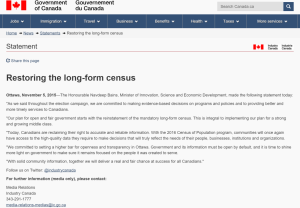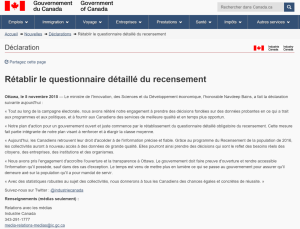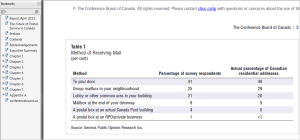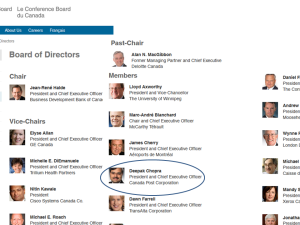 Across the country adhoc open data groups are meeting, holding hackathons online, they are making all sorts of apps, they are asking for data and want current data channels improved, they are making maps and deploying platforms, but also they are concerned about tracking and surveillance. These groups involve people from all levels of government, civic technology, open data, and the private sector. People are involved for all kinds of reasons and what is notable is that these are people who have agency, knowledge, and power combined with the capacity to act – the key ingredients for what Andrew Feenberg would call, technological citizenship. Doing technological citizenship is one way for people to engage in a technological society such as Canada, and in a very sophisticated and complicated information and technology situation such as a pandemic.
Across the country adhoc open data groups are meeting, holding hackathons online, they are making all sorts of apps, they are asking for data and want current data channels improved, they are making maps and deploying platforms, but also they are concerned about tracking and surveillance. These groups involve people from all levels of government, civic technology, open data, and the private sector. People are involved for all kinds of reasons and what is notable is that these are people who have agency, knowledge, and power combined with the capacity to act – the key ingredients for what Andrew Feenberg would call, technological citizenship. Doing technological citizenship is one way for people to engage in a technological society such as Canada, and in a very sophisticated and complicated information and technology situation such as a pandemic.
People’s intentions are good, but as the saying goes ‘the road to hell is paved with good intentions’ and caution and level headedness is required.
People involved in humanitarian work know this, and we have much to learn from them, and Patrick Meir is one of these great people. He shares in Digital Humanitarians: How Big Data is Changing the Face of Humanitarian Response what he learned during the 2010 Earthquake disaster in Haiti, and in other contexts. He is not alone, there is much to learn from the Signal Program on Human Security and Technology at the Harvard Humanitarian Initiative (HHI) at the Harvard T.H. Chan School of Public Health, the Responsible Data project and the Protection Information Management (PIM) initiative.
It is time to bring this overseas humanitarian crisis work home!
This is an exceptional time and right now we are witnessing the erosion of basic rights in exchange public good, as the situation is ‘evolving’, while a new form of data politics emerges with little or no discussion of data governance. The changes comes with an increase in surveillance and control, which might stay longer than we had thought and hoped for.
This too is not new, and the Signal Code work was developed precisely for this type of situation. These researchers advocate for a rights based approach for humanitarian information activities (HIA) work during a crisis, a pandemic is arguably a crisis, and they refer to the Humanitarian Charter and Minimum Standards in Humanitarian Response that starts with an understanding of dignity as being:
…more than physical well-being; it demands respect for the whole person, including the values and beliefs of individuals and affected communities, and respect for their human rights, including liberty, freedom of conscience and religious observance.
They also argue for a duty of care to be operationalized during the crisis, and I would argue that this should be done by us and our governors and administrators, so that we do not use this pandemic as reasoning to violate rights, to circumvent the law and to be negligent in our data and technology work. The COVID-19 pandemic is temporary, but the data collected and the technologies built will live beyond the crisis. There therefore a duty to be responsible now and to develop data governance strategies for the future.
The goal of the Signal Code is to develop ethical obligations for humanitarian actors including minimum technical standards for the safe, ethical, and responsible conduct of humanitarian information activities (HIAs) before, during, and after disasters strike. They provide the following five rights when conducting HIAs:
1. The Right to Information
Access to information during crisis, as well as the means to communicate it, is a basic humanitarian need. Thus, all people and populations have a fundamental right to generate, access, acquire, transmit, and benefit from information during crisis. The right to information during crisis exists at every phase of a crisis, regardless of the geographic location, political, cultural, or operational context or its severity
2. The Right to Protection
All people have a right to protection of their life, liberty, and security of person from potential threats and harms resulting directly or indirectly from the use of ICTs or data that may pertain to them. These harms and threats include factors and instances that impact or may impact a person’s safety, social status, and respect for their human rights. Populations affected by crises, in particular armed conflict and other violent situations, are fundamentally vulnerable. HIAs have the potential to cause and magnify unique types of risks and harms that increase the vulnerability of these at-risk populations, especially by the mishandling of sensitive data.
3. The Right to Privacy and Security
All people have a right to have their personal information treated in ways consistent with internationally accepted legal, ethical, and technical standards of individual privacy and data protection. Any exception to data privacy and protection during crises exercised by humanitarian actors must be applied in ways consistent with international human rights and humanitarian law and standards.
4. The Right to Data Agency
Everyone has the right to agency over the collection, use, and disclosure of their personally identifiable information (PII) and aggregate data that includes their personal information, such as demographically identifiable information (DII). Populations have the right to be reasonably informed about information activities during all phases of information acquisition and use.
5. The Right to Rectification and Redress
All people have the right to rectification of demonstrably false, inaccurate, or incompletedata collected about them. As part of this right, individuals and communities have a right to establish the existence of and access to personal data collected about themselves. All people have a right to redress from relevant parties when harm was caused as a result of either data collected about them or the way in which data pertaining to them were collected, processed, or used.
These are important to consider. I will come back to these in the coming days and I will point to insight provided by other who have first hand experience of doing data work during a time of crisis. I hope this is food for thought.




Comments on Posts